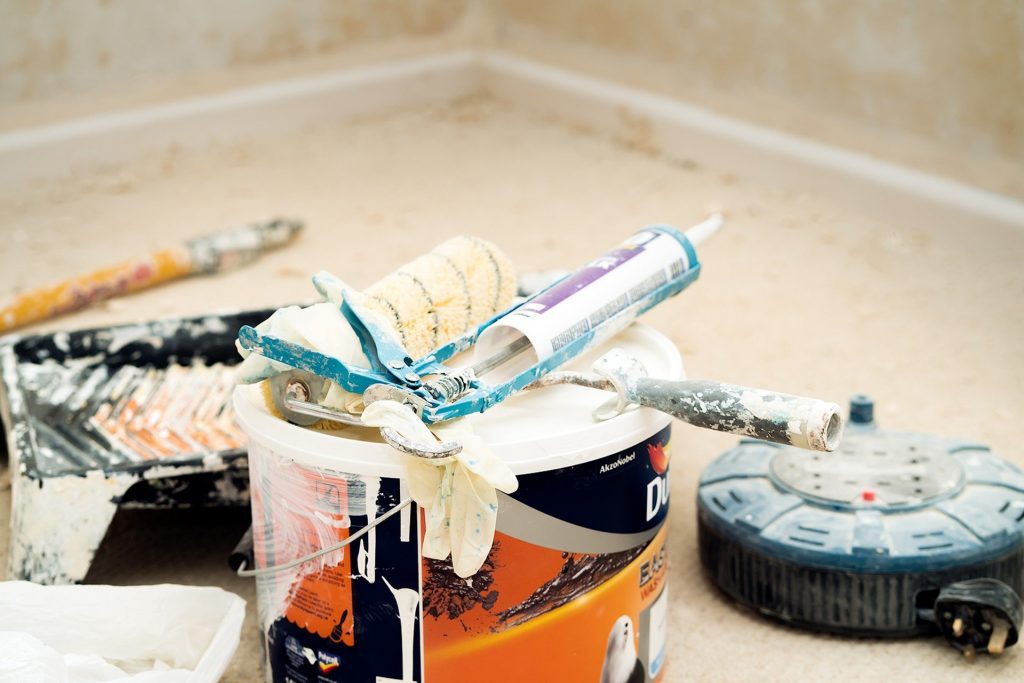
Bottom painting your boat is a tough task, that’s why most boaters prefer to pay thousands of dollars for a professional paint job.
But if you’re on a tight budget and you need some handy tips on how to properly bottom paint your boat, then you’re in the right place. In this article, we’ll discuss the materials you need, the preparation process, and the dos and don’ts.
Benefits of Bottom Painting Your Boat

Bottom paint is also known as antifouling paint that is used to prevent barnacles, weeds and other aquatic organisms (zebra mussels, snakehead fish, lampreys, European green crab) from attaching to the submerged part of your boat’s hull.
By doing this procedure once or twice a year, your boat hull will be in good condition and avoid any repairs that can cost you a lot of cash.
What Materials Do You Need?

Bottom painting your boat needs a lot of equipment not only for your boat but also for yourself. You need to prepare and protect yourself so you won’t be exposed to cleaning and painting chemicals like biocide – that prevent any organisms, plants and animals from attaching to your boat hull.
Here are some of the materials that you need before painting your boat hull:
- Rags and canvas drop cloth
- Gloves and foot covers
- Painter’s suit and goggles
- Roller
- Paint tray
- Roller frame
- Paintbrushes
- Stirring sticks
- N95 respiratory masks
- Thinner and solvents
- Orbital Sander
- Chisel
- Powered pressure washer
- The paint of your choice
If you don’t have some of the materials in your home or you’re on a tight budget to purchase new ones, you can improvise on them as long as they will work.
For some instances, you can use a double surgical mask or industrial mask as an alternative for N95 masks.
Preparing Your Boat for Bottom Paint
Before worrying about the paint that you’ll be applying on your boat, you need to make sure that the bottom of your boat is clean and ready.
Cleaning – since the bottom part of your boat is always wet and can’t be seen when you’re on the water, expect it to be messy and slimy. Make sure to let it dry first then use a chisel to get rid of barnacles and weeds.
You may also use a powered pressure washer if you have one at home to remove aquatic organisms attached to your boat hull.
Sanding – after cleaning, you may now use an orbital sander or a finishing sander with 80-grit sandpaper. Before using these materials you have to know how to properly operate them to avoid any damage or accidents.
Choosing the Right Paint

There are many types of boat paints that consist of different chemicals to protect your boat. Here are some of the options that you can use:
- Vivid Antifouling Paint – if you choose bright colors to bottom paint your boat, they should contain white copper, zinc, and biocide. These chemicals will help you protect your boat and look dazzling.
- Composite Copper Technology (CCT) – compared to other boat paints, CCTs use less copper. They’re considered environmentally friendly paint since they replace the traditional formula (cuprous oxide) with modified epoxy paint.
- Thin-film Paints – these paints are recommended for boats that are used on freshwater. Since thin-film paints feature a super-slick PTFE (Polytetrafluoroethylene) finish that prevents the growth of algae.
How Often Should You Bottom Paint Your Boat?

Generally, you should bottom paint your boat at least once a year but this still depends on what kind of paint you used and how many times you use your boat.
If you rarely use your boat, your bottom paint can last up to two years but if you use your boat every weekend, you can at least try to check your boat’s bottom after each season. Also, it depends on whether your boat is stored on a trailer or on a dock.
How Much Does It Cost To Bottom Paint Your Boat?

If you’re willing to pay for a professional bottom paint job, it can cost around $15 to $100 per linear foot. Additional fees may apply depending on the location of your boat – do they need to haul your boat or not?
While DIY bottom paint depends on the size of your boat, you also need to consider other factors such as; the brand, the number of gallons, and materials to use, which add to your total expense of at least $50 to $500.
Conclusion
DIY bottom painting can cost less but it’s a serious matter, especially when maintaining and protecting your boat. If this is your first time painting a boat, you can check and download our Boat Painting Checklist.
Have you tried bottom painting your boat? Share us your experience and comment below.



